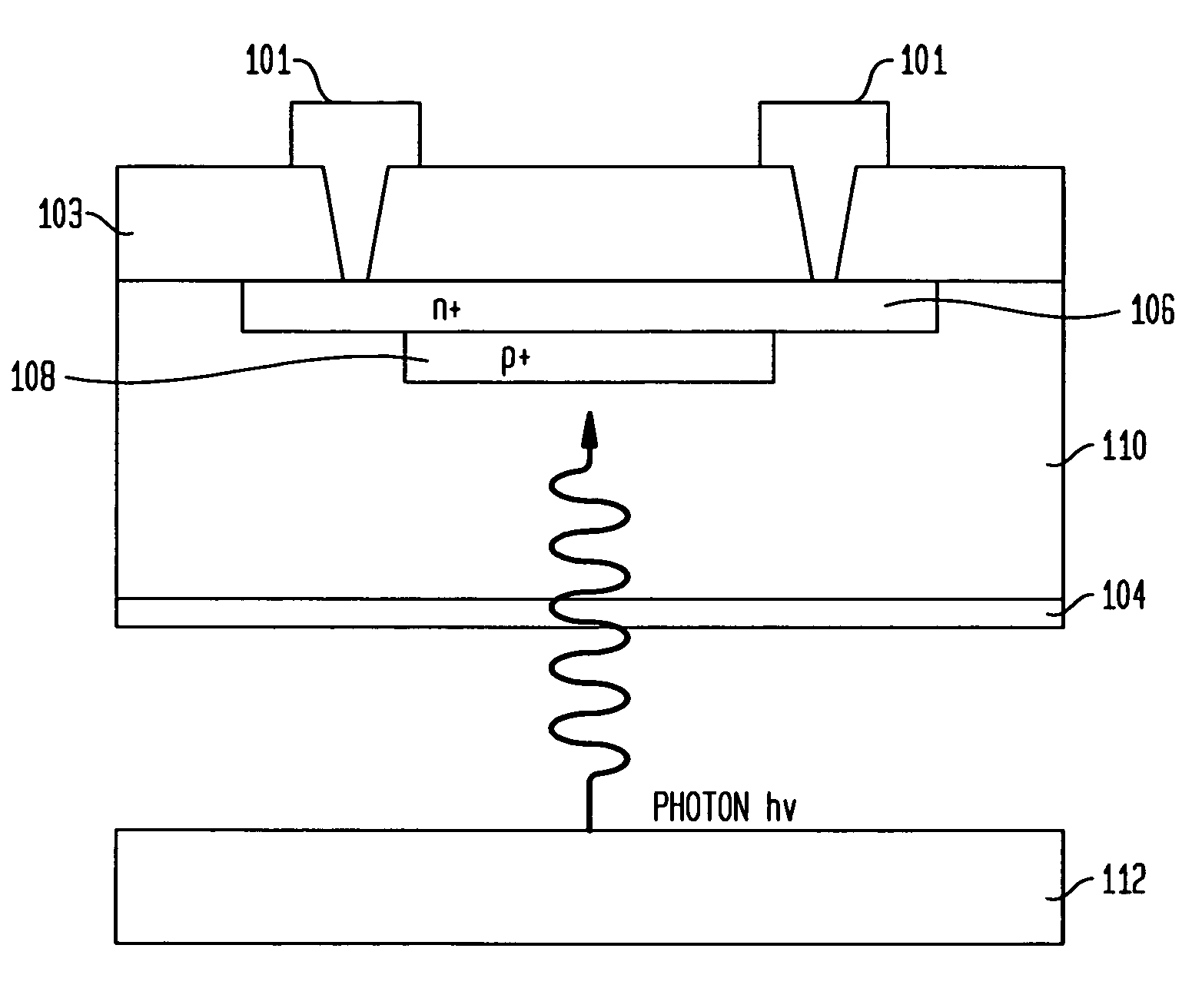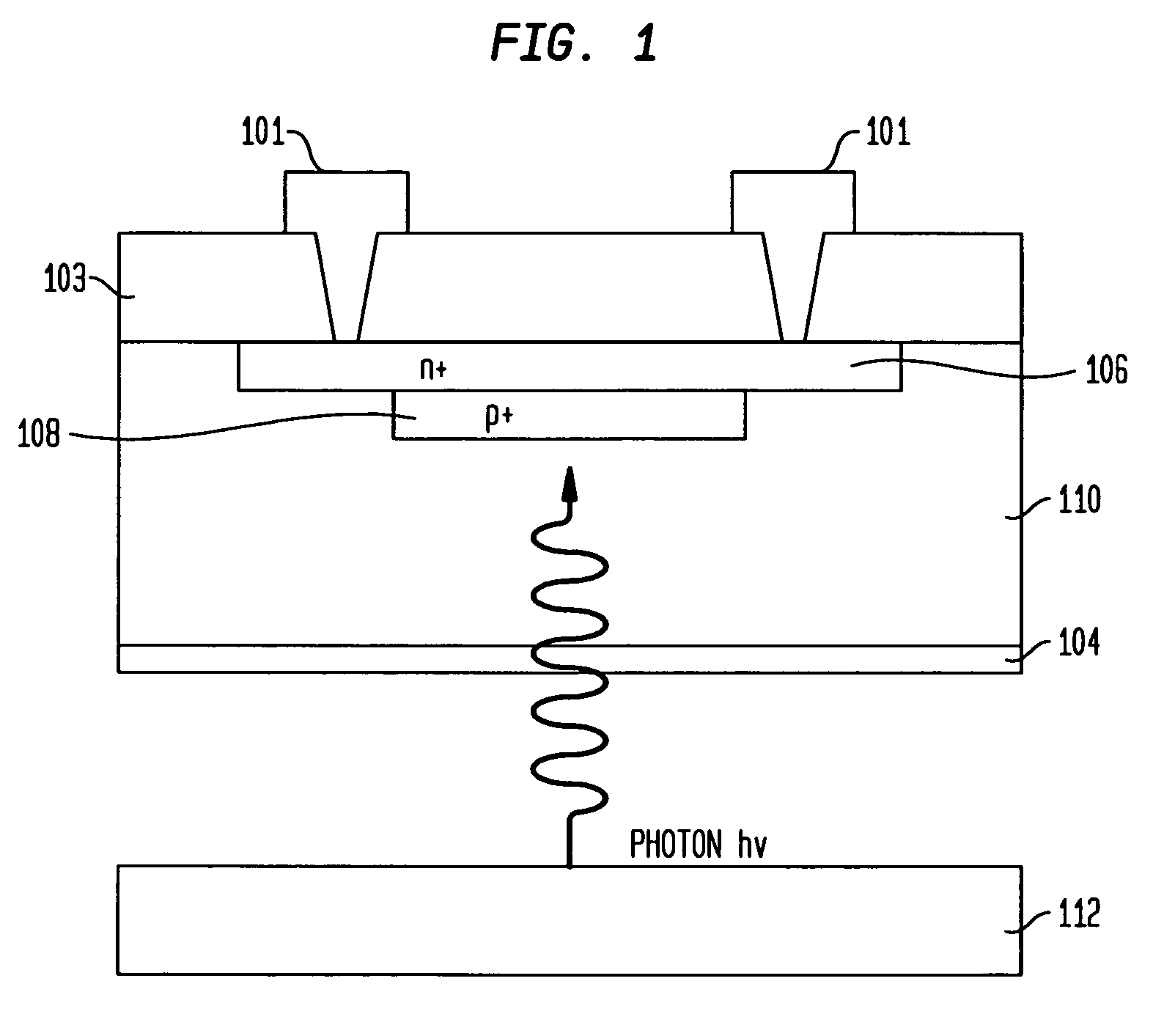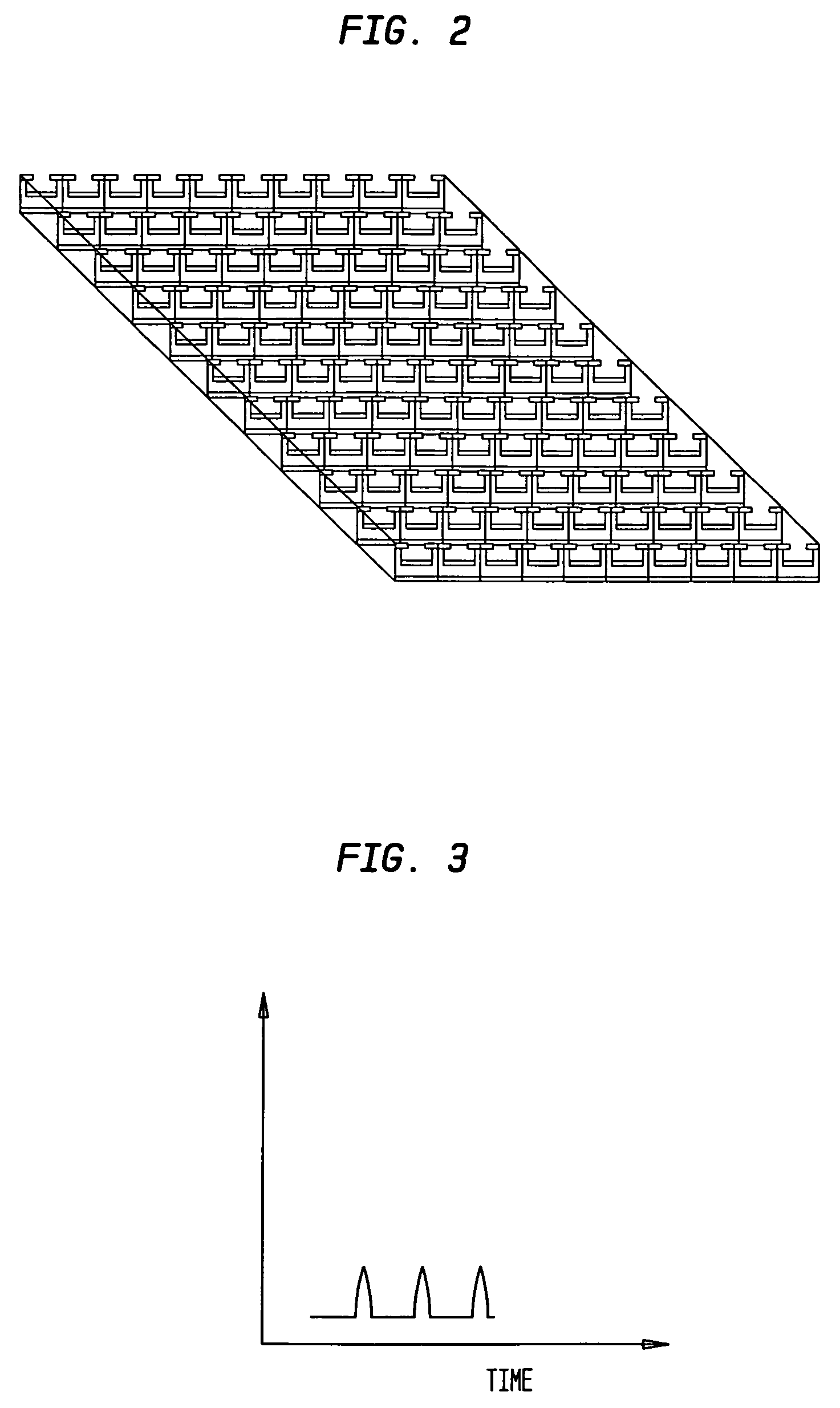Quantitative radiation detection using Geiger mode avalanche photodiode binary detector cell arrays
a photodiode and binary detector technology, applied in radiation measurement, instruments, measurement devices, etc., can solve the problems of large photomultiplier tubes, large volume, and low quantum efficiency, and require a high supply voltag
- Summary
- Abstract
- Description
- Claims
- Application Information
AI Technical Summary
Benefits of technology
Problems solved by technology
Method used
Image
Examples
Embodiment Construction
[0018]FIG. 1 is a diagram showing the basic structure of an example photodiode detector cell in accordance with the invention, and FIG. 2 illustrates an array of cells, which is coupled to a scintillator to form a radiation detector. The cell contains a shallow p-n junction formed by a p-type substrate 110 and a heavily doped n-type layer 106. Heavily doped p-type layer 108 is formed in the substrate below the n-type layer 106. P-type layer 108 creates a sheet of charge that divides the cell structure into a low electric field region below layer 108, wherein photon absorption occurs, and a high electric field region above layer 108 wherein impact ionization occurs. Metal electrodes 101 contact the n-type layer 106 through an insulation layer 103. Metal contact layer 104 is provided on the opposite side of the substrate 110.
[0019]In accordance with the invention, the photodiode cell is operated in Geiger mode, which is fundamentally a digital mode of operation. Specifically, the phot...
PUM
 Login to View More
Login to View More Abstract
Description
Claims
Application Information
 Login to View More
Login to View More - R&D
- Intellectual Property
- Life Sciences
- Materials
- Tech Scout
- Unparalleled Data Quality
- Higher Quality Content
- 60% Fewer Hallucinations
Browse by: Latest US Patents, China's latest patents, Technical Efficacy Thesaurus, Application Domain, Technology Topic, Popular Technical Reports.
© 2025 PatSnap. All rights reserved.Legal|Privacy policy|Modern Slavery Act Transparency Statement|Sitemap|About US| Contact US: help@patsnap.com



